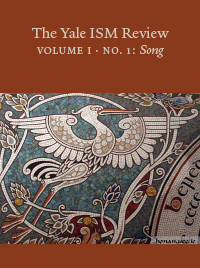Paul Inwood
Before the Second Vatican Council, Roman Catholics were an unbiblical people. Today, all that has changed and the scriptures are familiar to regular churchgoers. Two major factors in making this transition have been the use of vernacular translations and the reintroduction of the Responsorial Psalm into the Mass after an absence of over fifteen hundred years.
With the Responsorial Psalm, the object of the post-conciliar liturgical reformers was to place into the mouths of worshipers the sung texts of brief psalm extracts as refrains, for this was always a sung item in the form in which it flourished in roughly the fifth through sixth centuries. The reason it had died out was because the musicians got hold of it, resulting in its replacement by prolix Latin Gradual chants, which effectively excluded the assembly as the music became more and more elaborate.
The post-conciliar reformers, then, were intent upon engaging the people once again as an integral part of the chant after the First Reading, which links that reading to the Gospel. To aid this, along with the reinstatement of the Responsorial Psalm, has come the reinstatement of the role of the cantor or psalmist (and this in turn has led to the development of the ministry of cantor or leader of song for the entire celebration, not just the psalm).
The classic Responsorial Psalm form consists of a refrain (often called a response) sung first by one or more cantors and repeated by all, followed by a stanza (often of four lines, or two psalm verses) sung by the cantor, with the people singing the refrain after each stanza. The form is called “responsorial” not just because it includes a response but because it is a response (to the First Reading). Not all scholars agree that this is the case, but the General Instruction of the Roman Missal does include instructions for singing the “Responsorial” Psalm without a response. (Very few people in fact do this.)
Responsorial psalmody developed out of an earlier form in which an Alleluia or other brief refrain was sung by the people at the end of every line of the psalm. The effect was something like a litany, and it is sometimes known as “antiphonal psalmody.”
A large musical repertoire has been generated in different styles over the forty-five years since the revised Ordo Lectionum Missae appeared in 1969. Some have been disappointed that the new Lectionary contains only excerpts from the psalms, normally four stanzas, rather than psalms being used in their entirety (which has in fact happened more recently with the increasing use of Entrance and Communion psalms with their antiphons). Complete psalms are, however, used in the Liturgy of the Hours, where they are bookended with an antiphon before and after. (For that reason this form is often incorrectly known as “antiphonal psalmody,” whereas, in its monastic form, it should be termed “alternating psalmody,” as it is sung by two sides of the choir or church in alternation.)
Anglican and Episcopal churches have also now adopted the responsorial format as a new way of singing the psalms, though not yet to a large extent. In the Catholic Church, the Psallite project has shown the pathway for numerous new variants on the basic refrain-plus-psalm form, and future challenges are emerging in the area of multilingual or intercultural psalmody. The Responsorial Psalm is undoubtedly one of the success stories of the post-conciliar reforms, and one can truly say that the vast majority of congregations now respond enthusiastically to the Psalmist’s exhortation: Psallite sapienter — “Sing praise with all your skill!” (Ps. 47:8).
 Paul Inwood is an internationally-known liturgist, composer, organist, choral director, author and clinician. His work is found in hymnbooks across the English-speaking world, and he is a frequent contributor to liturgical journals, blogs and forums. He was responsible for the introduction of the music of Taizé into the UK in the 1970s and the music of the Iona Community into the USA in the 1980s. From 1986 to 1998 he was a president of the international liturgical music study group Universa Laus. In 2009 he was named Pastoral Musician of the Year by the National Association of Pastoral Musicians.
Paul Inwood is an internationally-known liturgist, composer, organist, choral director, author and clinician. His work is found in hymnbooks across the English-speaking world, and he is a frequent contributor to liturgical journals, blogs and forums. He was responsible for the introduction of the music of Taizé into the UK in the 1970s and the music of the Iona Community into the USA in the 1980s. From 1986 to 1998 he was a president of the international liturgical music study group Universa Laus. In 2009 he was named Pastoral Musician of the Year by the National Association of Pastoral Musicians.
This article is licensed under a Creative Commons Attribution 4.0 License.
Recommended Citation: Inwood, Paul (2014) “Psalm Singing in the Roman Catholic Communion,” The Yale ISM Review: Vol. 1: No. 1, Article 10.
Available at: https://ismreview.yale.edu/
View article as a PDF: Psalm Singing in Roman Catholic Liturgy
